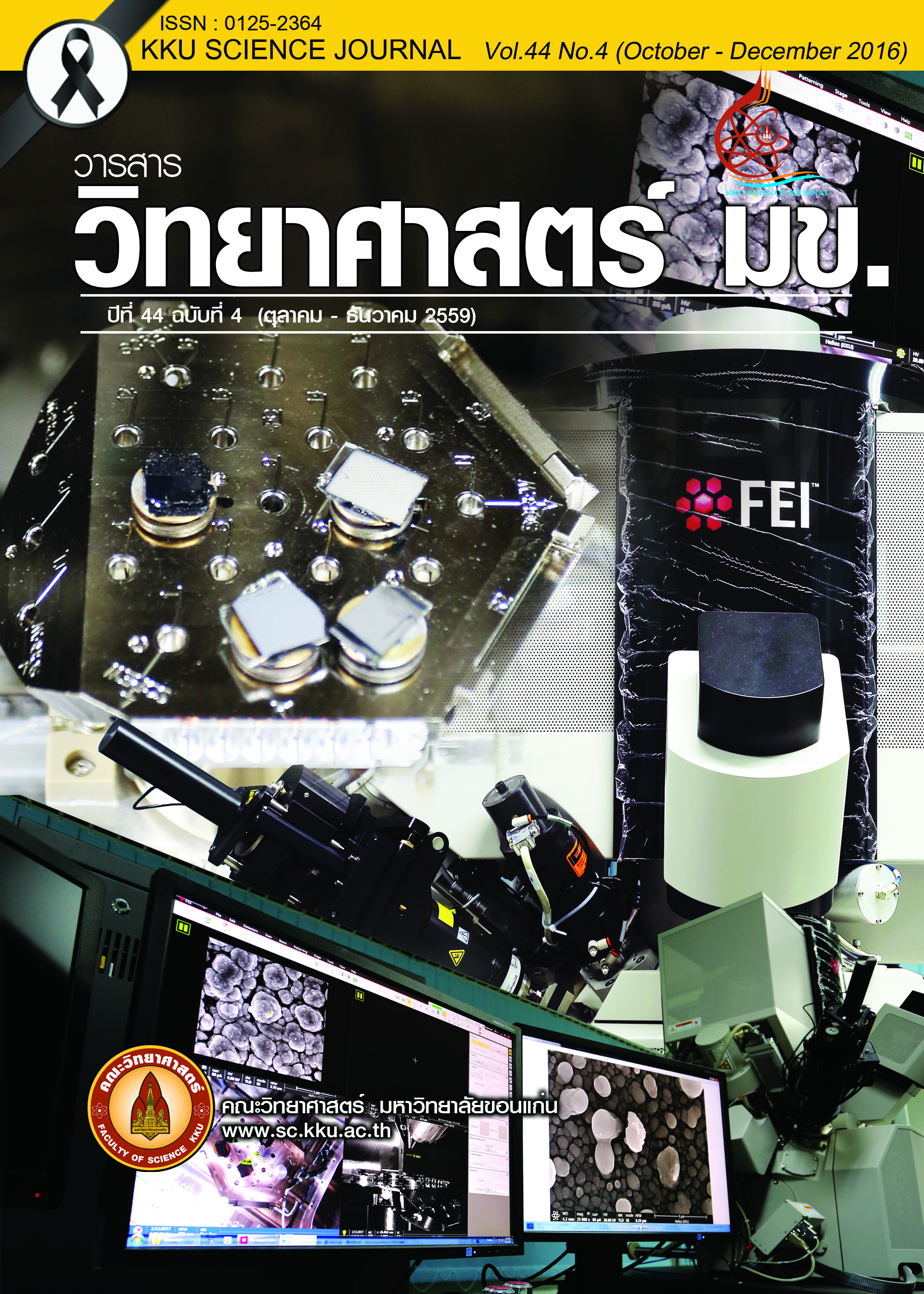Effect of Alternative Current and Direct Current Stimulation onAnode on Electricity outputs of Microbial Fuel Cell
Main Article Content
Abstract
Selection of consortium for microbial fuel cell (MFC) needs effective consortium that can both utilize organic compound and directly transfer electron to anode. Poised potential and current stimulation on anode could enhance electricity output and COD removal in anode of MFC. The aim of this research was to study the effect of alternative current (AC) and direct current (DC) and culture media (NB, PBBM and FWA) that use for anode stimulation on voltage, current density and power density outputs of MFC. The result show that PBBM+AC stimulation at 5 milli-ampere (mA) gave the highest current density and voltage at 72.9 mA/m2 and 719 milli-volt (mV) respectively. Moreover PBBM+AC stimulation at 10 mA gave the highest power density at 13.4 milli-watt/m2 . Ferric reducing bacteria such as Shewanella putrefaciens and Aeromonas hydrophila were isolated from anode biofilm of PBBM+AC stimulation at 10 mA indicating that effective directly electron transfer bacteria could be enriched by AC stimulation. From this study, AC current stimulation on anode at 0-10 mA in PBBM medium can be used to enrich the effective consortium on anode for use in MFC.
Article Details

This work is licensed under a Creative Commons Attribution-NonCommercial-NoDerivatives 4.0 International License.


